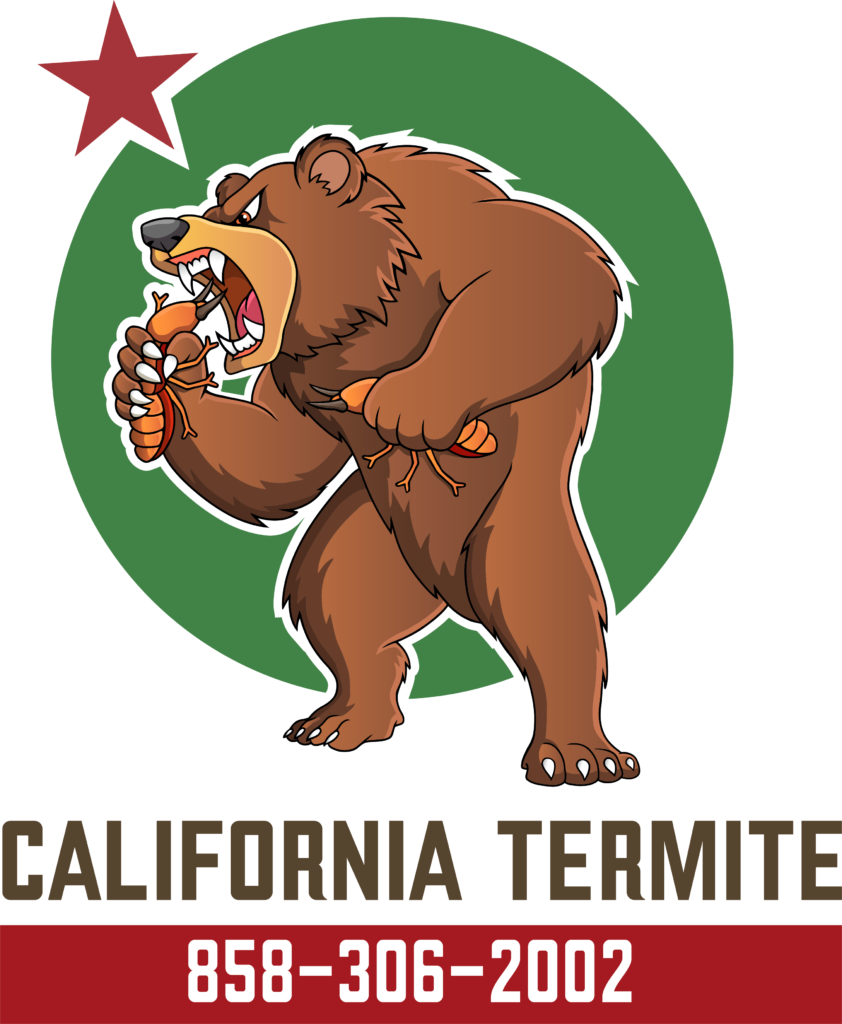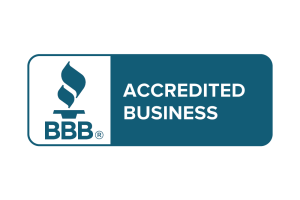Conditions Conducive
 Climate
Climate
San Diego’s climate creates the perfect conditions for drywood termites. Like people, termites thrive near the ocean. The closer a home is to the coast, the higher the likelihood of termite infestations due to increased moisture levels. The marine layer provides just enough humidity for drywood termite colonies to flourish.
Drywood termites live inside the wood they infest, but despite their name, they still require some moisture to survive. This moisture can come from condensation, plumbing leaks, clogged gutters, or roofing issues.
San Diego’s mild winters further contribute to termite activity. Unlike colder northern regions, which are inhospitable to drywood termites, Southern California’s year-round warmth allows them to remain active.
In hotter, drier areas, subterranean termites still thrive because they nest underground and travel through mud tubes to access food sources.
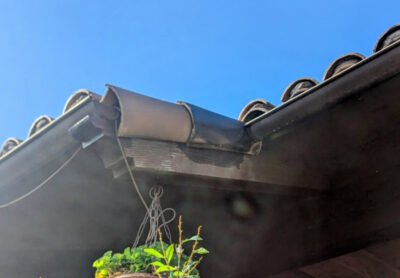 Excess Moisture
Excess Moisture
Excess moisture is the primary cause of all wood-destroying organisms. Whether it’s termites, wood rot, or fungi, moisture is what allows these problems to take hold. A house that remains completely dry is far less likely to experience termite activity or structural damage caused by decay.
Moisture intrusion can stem from numerous sources, including plumbing leaks, damaged or aging roofs, clogged gutters, improperly draining A/C units, irrigation overspray, and even something as simple as poor ventilation. In coastal areas, homes may be free of these common moisture sources but still experience issues due to the persistent marine layer, which keeps wood damp for extended periods.
Experienced termite inspectors know that moisture detection is just as important as spotting active infestations. They carefully evaluate a home for potential problem areas, asking key questions:
- Where does the A/C condensate line drain? Does it discharge near the foundation, creating a persistent moisture source?
- Are there dark spots in the attic sheathing, indicating past or ongoing roof leaks?
- Does the roof have design flaws, such as flat or improperly sloped sections that allow water to pool?
- Are there signs of leaks under sinks, around toilets, or near appliances?
- Do wooden structural components show signs of high moisture content or fungal growth?
Once a moisture issue is identified, the next step is determining whether it has led to a wood-destroying organism infestation. If moisture is present, it’s only a matter of time before termites, fungi, or beetles take advantage. Addressing the moisture source is just as critical as treating the infestation itself—otherwise, the problem will return.
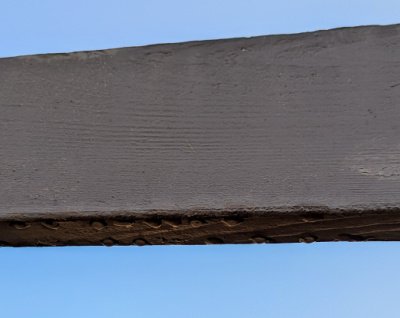 Condensation
Condensation
San Diego isn’t typically considered humid—probably because it doesn’t experience the sweltering heat and humidity found in other regions. However, there’s still plenty of moisture in the air, especially near the coast, and that moisture contributes to wood rot and termite activity.
Where there’s moisture, there’s condensation. And condensation can wreak havoc on wooden pergolas, exposed wooden beams that extend past a home’s eaves, and any other flat wooden surfaces. Moisture accumulates on these surfaces, leading to fungal growth, which ultimately causes wood rot.
For termites, standing moisture on flat wood slowly soaks in, providing just enough hydration to sustain a drywood termite colony.
Even during droughts, condensation still occurs, making it a year-round concern for homeowners looking to protect their property from wood damage and termite infestations.
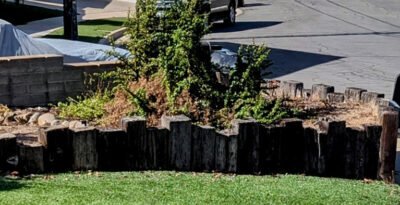 Earth-to-Wood Contact
Earth-to-Wood Contact
The leading cause of wood rot and subterranean termite infestations is direct wood-to-soil contact.
Even pressure-treated wood will eventually decay if placed directly on the ground. Without a concrete barrier, moisture from the soil wicks into the wood, creating the perfect environment for wood-decaying fungi and attracting foraging subterranean termites.
Common examples of earth-to-wood contact include planters, railroad ties, tree stumps used in landscaping, decks, and wooden footings for piers under mobile homes.
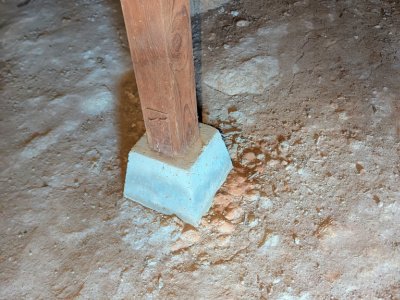 Concrete and Cement
Concrete and Cement
In the termite industry, the only time concrete or cement really matters is when we have to drill through it for a subterranean soil treatment—or when wood isn’t properly insulated by it. But if you’ve ever studied for a pest control licensing exam, you’d think we’re out here mixing and pouring concrete every day.
The State wants us to know the ingredients of each material, how long they take to cure, and even the tools used in the process. Meanwhile, in the real world, it’s more like, “Your deck is resting directly on soil—that can lead to subterranean termites and dry rot,” or, “After we drill the holes, we’ll patch them with concrete patch.”
 Faulty Grade:
Faulty Grade:
A faulty grade condition occurs when the soil level reaches or exceeds the top of a home’s foundation. This seemingly minor issue can lead to significant problems, including structural damage and hidden termite infestations.
When soil comes into direct contact with stucco or siding, it can trap moisture against the home. Over time, this excess moisture can lead to stucco rot, wood decay, and even mold growth. Homes with faulty grading are especially vulnerable in areas with poor drainage, irrigation overspray, or heavy rainfall, as moisture can accumulate undetected.
Beyond moisture concerns, faulty grading also creates an ideal entry point for subterranean termites. These termites travel through mud tubes, which they build along surfaces to maintain the moisture they need to survive. Normally, these tubes can be seen on an exposed foundation, providing a telltale sign of termite activity. However, when the foundation is covered by soil, these tubes remain hidden—allowing termites to invade undetected.
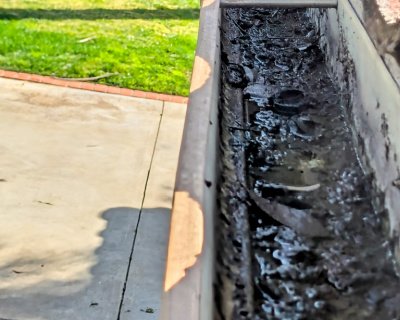 Clogged Gutters
Clogged Gutters
San Diego doesn’t see much rain, so clogged gutters might not seem like a big deal. But when gutters are blocked, they trap standing water, creating the perfect conditions for wood rot and termite infestations.
Even so-called “seamless” gutters have seams, and where there are seams, leaks can occur. Over time, a slow drip against a section of fascia can introduce just enough moisture to cause problems. Drywood termites thrive in slightly damp wood, and excess moisture can also lead to a fungus infection, which accelerates wood rot.
Left unchecked, this minor issue can result in costly repairs. Regular gutter maintenance—removing debris and ensuring proper drainage—can help prevent wood damage and keep termites from turning your home into their next colony.

